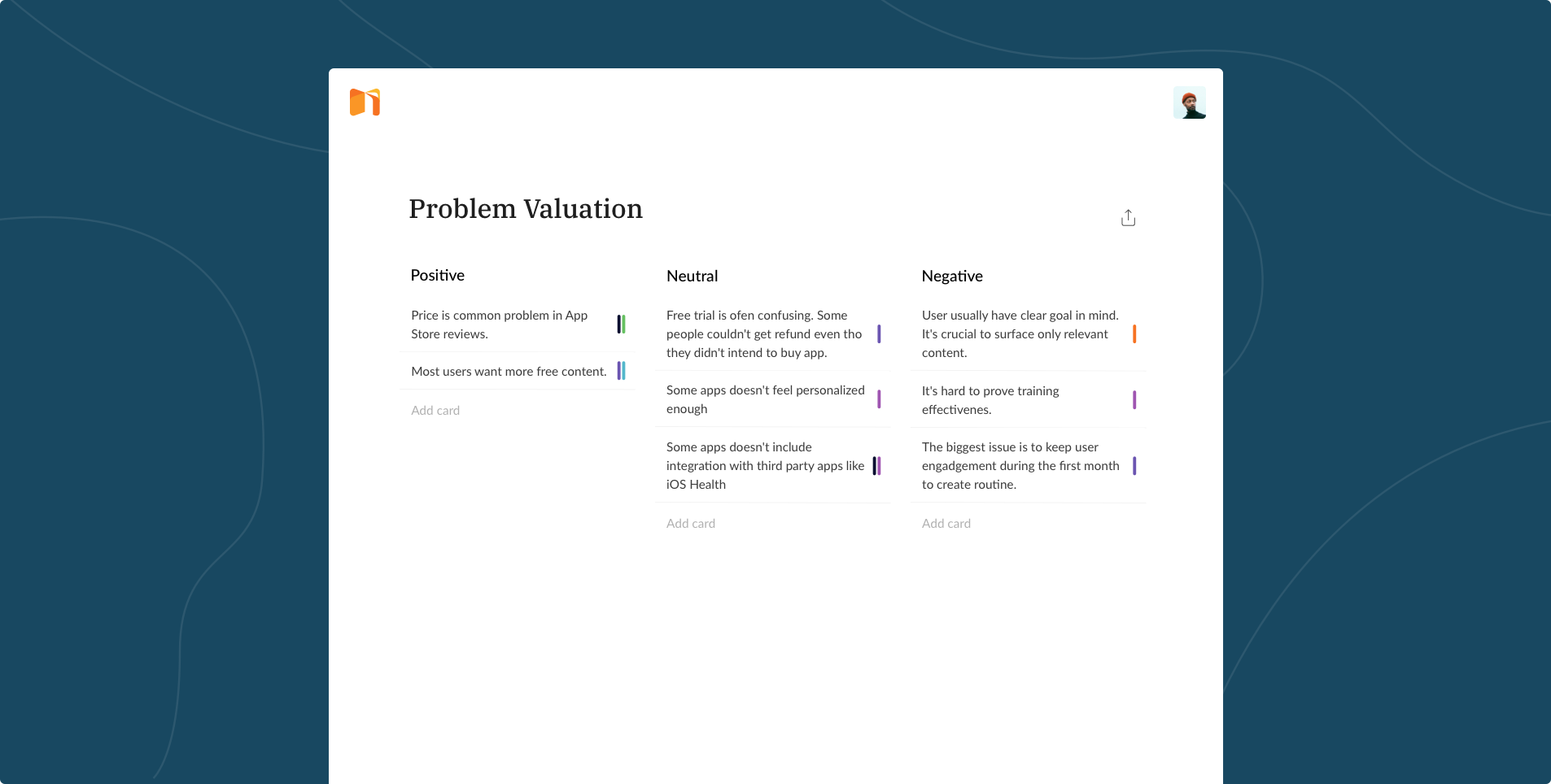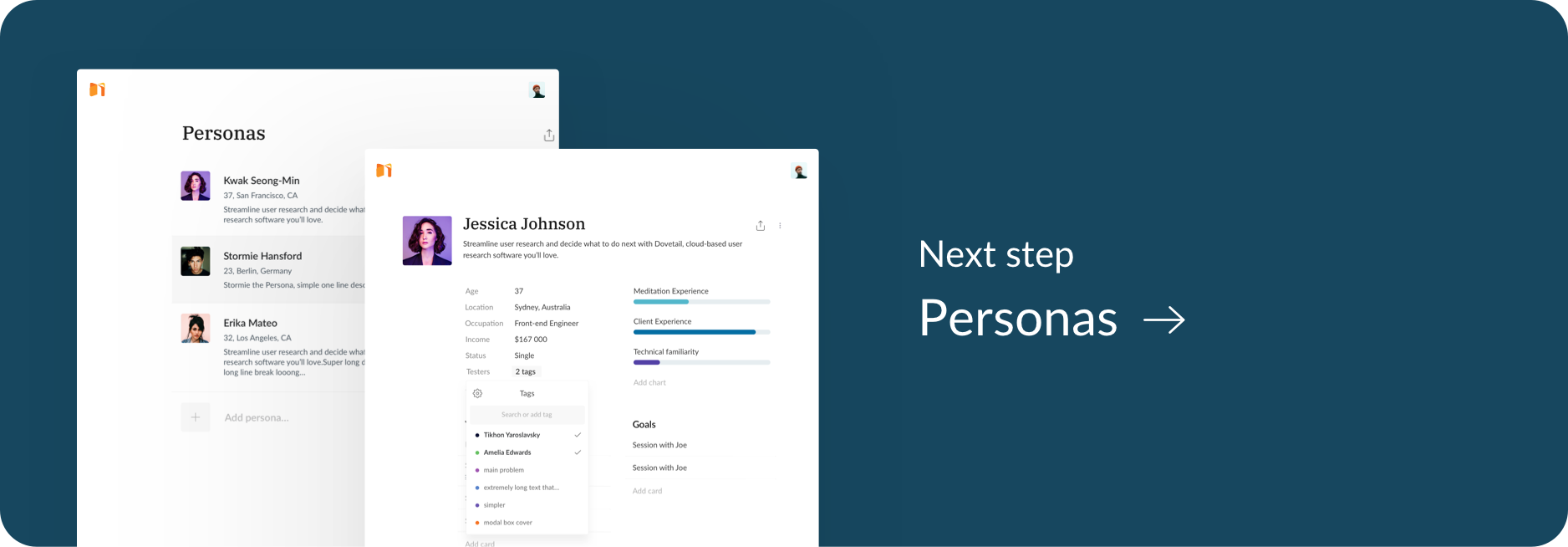The next step to creating your first Talebook research is defining the most significant problems that you need to resolve in your project with problem valuation method. You need to know what kind of questions your target audience will ask before you brainstorm solutions.
Step by step guide
Highlight problems
In the discovery phase, we identified different problems through the stakeholder interviews, user interviews, and competitive analysis. Go back to these methods and tag all problems you can identify with tag #problem.
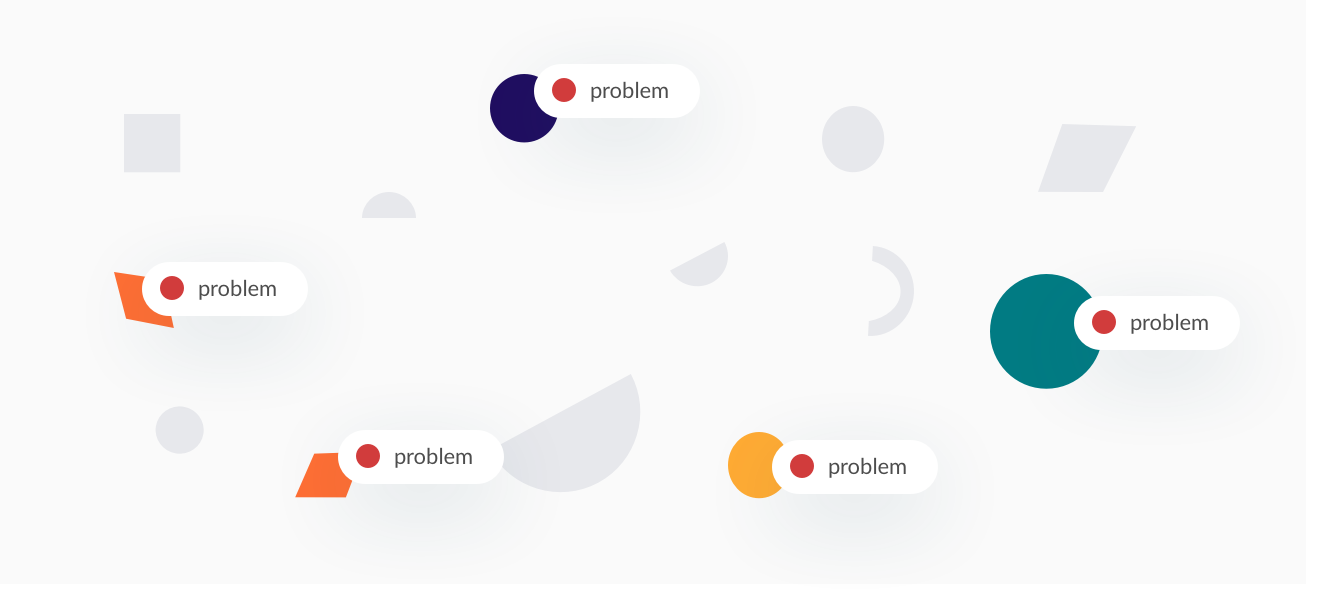
It could be hard to choose which problems are worth highlighting as all issues may be equally important.
Write down all possible and be sure to include your stakeholder’s business problems even if they do not directly relate to the product. For instance, they could be having some difficulty with their marketing efforts. At the end of this exercise, you will realize that some of these problems overlap, creating natural themes.
For each theme, create an additional tag example, “usability,” so you can easily notice the patterns.
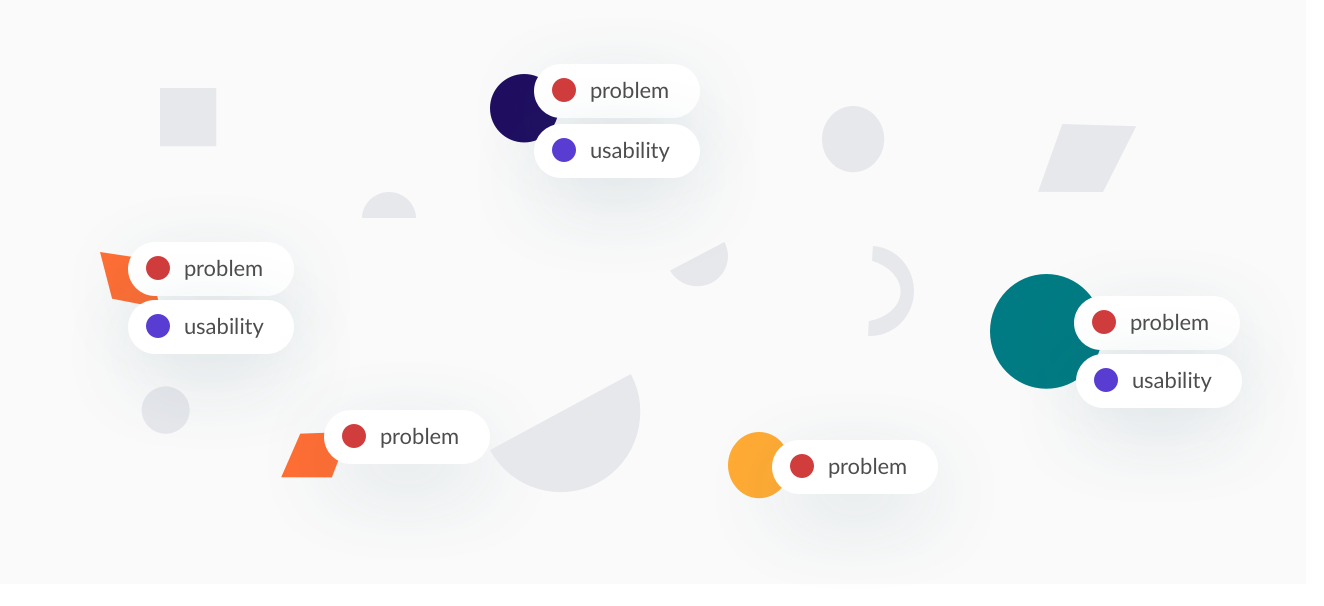
Add problems to Not really a column
All identified problems should go to the Not really column in probelm valuation method. Treat them as a backlog of all gathered issues.
Now go back to all your user research data and try to look at it from a birds-eye perspective. What are the most glaring problems? Which data groups have the most issues? Does something stand out from all of your notes?
Answering these questions will help you define which problems to tackle first. Now summarise all of your findings into the problem valuation method.
Qualify problems
Once you’ve added all the problems, it’s time to divide them into groups based on frequency, business, and user impact. In problem valuation, we break them into three groups:- Not really — Problems that rarely appeared in the analysis. Without substantial value for the users nor the business goals. It usually around 50% of all problems found.
- Important — Valuable ideas, though not crucial to product success. Around 30% of all problems found.
- Crucial Problems — The most critical problems, which appeared in most user interviews or notes as key for the stakeholder. Only 20% of the problems should be here.
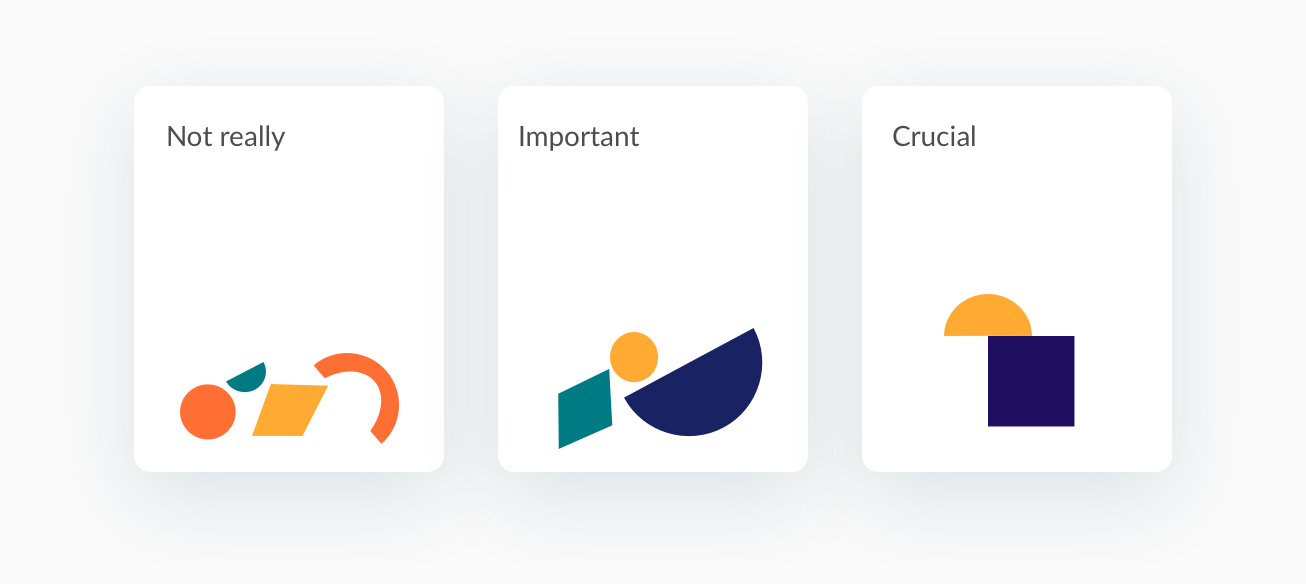
Share your findings with stakeholders
When you finalize your problems list, share it with your stakeholders. Explain that this list of problems is not based on your subjective ideas or recommendations. Rather, it’s the result of thorough research, which reflects the most common issues among user groups and competitive products sorted with your knowledge.
It’s common for the stakeholder to be quite busy and so they may not want to be involved in this research. That’s why it helps to have a strict deadline. If they don’t respond in a timely manner, move to the next step.
Tips
Resist the urge to create solutions
Don’t try to focus on coming up with solutions. Break down the problems systematically before thinking of the solutions. The human brain works better if it focuses on one activity at a time.
Get help from your colleagues
The whole exercise is for one person – the UX Designer. However, if you have a person who can help you collect data, go ahead and invite them to the team. Don’t be afraid to ask for help.
Let the client have the final vote
If the client decides that he wants to deal with another problem first, let him do that. This exercise is only the tool to have a bird’s eye perspective of all possible issues related to the research subject.
Conclusion
Identifying the problem is the first step to creating the solution. At the end of this exercise, you should have a firm grasp on the main problems being faced by your target audience and stakeholders. With this, we can start targeting the most pressing concerns and tackle the less urgent issues later on.




